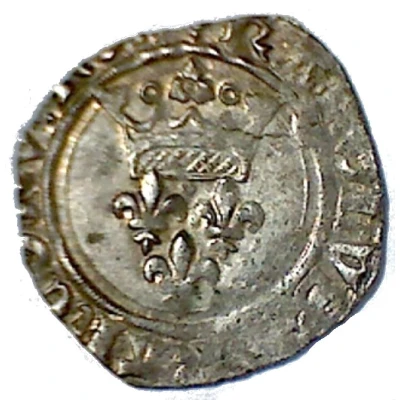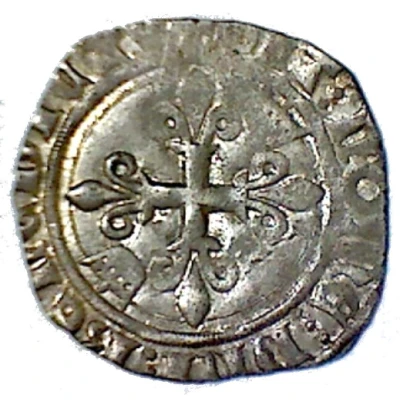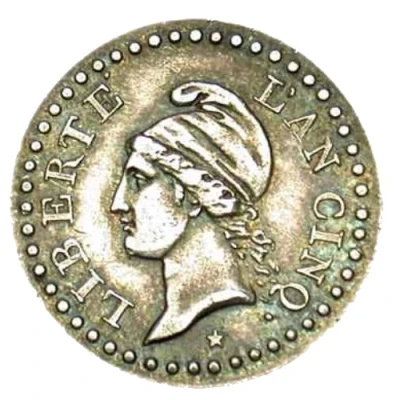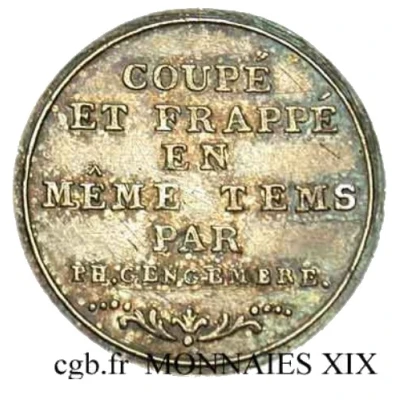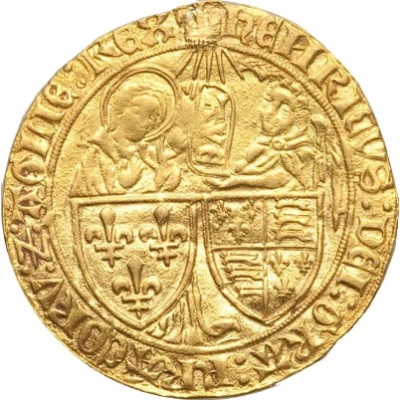
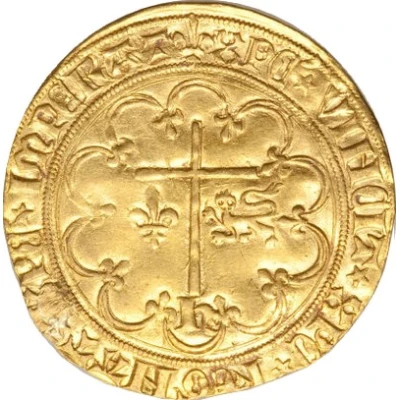

Salut d'or - Henry VI ND
| Gold (.999) | 3.496 g | 27 mm |
| Issuer | France |
|---|---|
| King | Henry VI (Henri VI) (1422-1453) |
| Type | Standard circulation coin |
| Years | 1423-1449 |
| Currency | Livre tournois (1204-1795) |
| Composition | Gold (.999) |
| Weight | 3.496 g |
| Diameter | 27 mm |
| Shape | Round (irregular) |
| Technique | Hammered |
| Orientation | Variable alignment ↺ |
| Demonetized | Yes |
| Updated | 2024-10-04 |
| Numista | N#95179 |
|---|---|
| Rarity index | 88% |
Reverse
Plain Latin cross accosted by a lily and a leopard, under which is a H oncial, all in a fleur-de-lis decalobe.
Script: Latin
Lettering: XPC ★ VINCIT ★ XPC ★ REGNAT ★ XPC ★ IMPERAT
Translation:
Χρ (-ιστό-) ς Vincit Χρ (-ιστό-) ς Regnat Χρ (-ιστό-) ς Imperat:
"Christ conquers, Christ reigns, Christ commands".
Comment
From 1421, the kings of France Charles VI and Charles VII had a new type of gold coin struck: the golden "salut". Their rivals, the kings of England Henry V then his son Henry VI, hastened to copy the golden "salut" to make use of it, in particular in their French possessions, using the graphics of the French currency but with some specific modifications. In the first issue of Henry VI's golden "saluts", ordered on February 6, 1423, the gold "salut" was worth 25 "sous tournois" (and the golden "saluts" therefore weighed about 3.9 grams). However, barely seven months later and to cope with the many monetary manipulations of his adversary Charles VII (1422-1461), Henry VI had to reduce the price of gold "saluts" to 22 "sols" and 6 "deniers", or 22 "sols" and a half (for a weight of about 3.5 grams per piece now). To differentiate the emissions:- First issue of February 6, 1423: blessing hand above the Virgin and the Archangel (weight: 3.9 g).
- Second broadcast of September 6, 1423: five rays of divine light above the Virgin and the Archangel (weight: 3.5 g).
Thirteen continental mints minted coins in the name of Henry VI but, according to Ducan Elias, we only know salutes for Amiens, Auxerre, Châlons, Dijon, Le Mans, Paris, Rouen, Saint-Lô, Saint-Quentin and Troyes; if specimens struck in Paris, Rouen and Saint-Lô are common, those found for other mints are much rarer. It is important to remember that while Henry VI's reign continued in England until 1453, he was kicked out of France in 1449. In addition, he did not directly control all the mints. Indeed, those of Amiens, Arras, Auxerre, Dijon, Mâcon, Nevers and Saint-Quentin were in reality in the hands of his ally, the Duke of Burgundy Philippe le Bon (1419-1467) . Also, when the latter reconciled with the King of France Charles VII after the Treaty of Arras signed on September 11, 1435, all his mints immediately stopped minting coins in the name of Henry VI! Subsequently, the cities are taken over one by one and with them their monetary mints: Le Mans in 1448, then in 1449 Saint-Lô and finally Rouen which remains the last to mint coins for Henry VI until October 29 of this year. To differentiate the mints:
Interesting fact
One interesting fact about the Salut d'or - Henry VI ND (1423-1449) coin from France is that it was minted during a time of great turmoil in the country. Henry VI was the king of England and France, and his reign was marked by the Hundred Years' War between the two countries. Despite this, the coin still features the traditional French motifs of the fleur-de-lis and the royal coat of arms, showing the resilience of French culture during this time.
